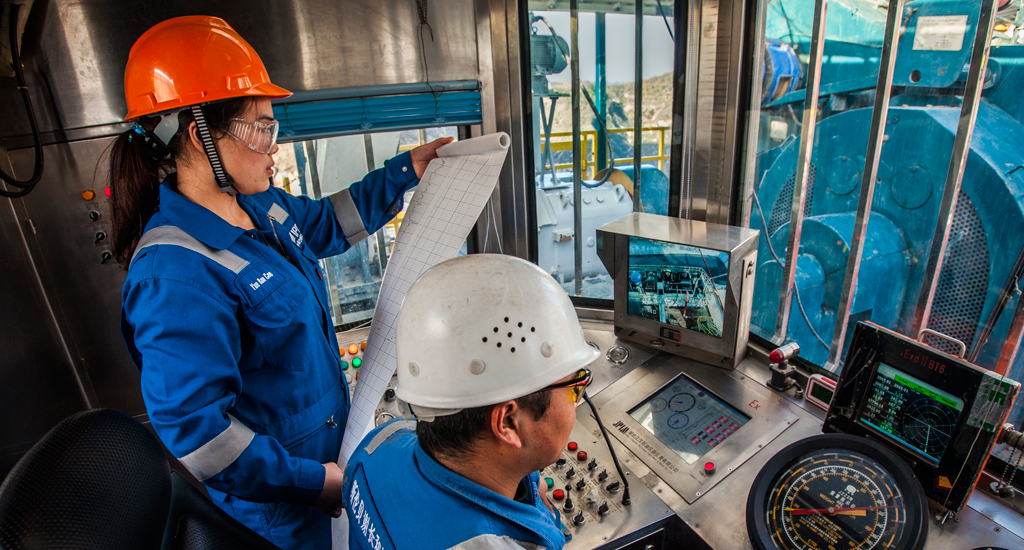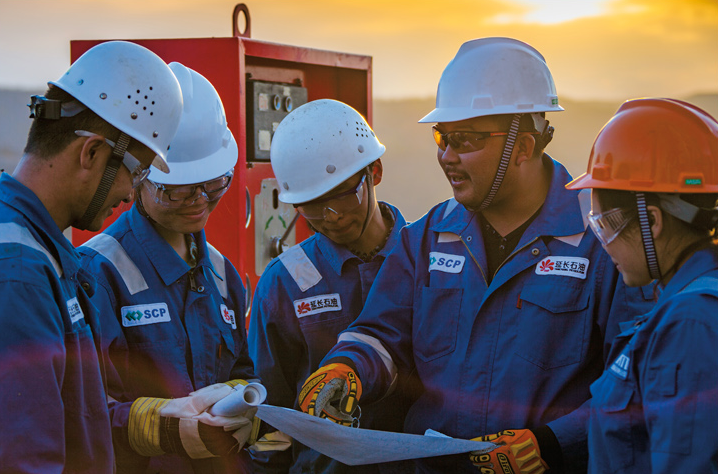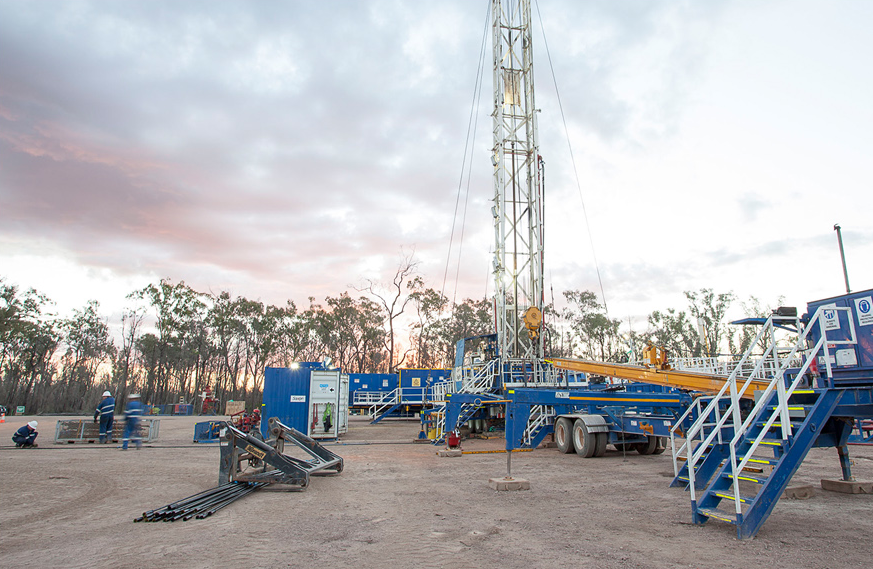Involving our customers in the integration process is critical. Their experts and ours must use common processes and workflows to meet challenges that range from reducing subsurface risk as exploration and appraisal begins to increasing the ultimate recovery achievable when a reservoir nears the end of its productive life. Schlumberger has a 20-year track record of integrating technologies, project management workflows, and human skills to satisfy not only the full range of customer challenges but also to meet internal goals across product line and field organizations.

Schlumberger benefits from four key differentiating advantages that form the basis for growth in the delivery of integrated services and solutions.
The first concerns individual technologies, such as those used to characterize an individual reservoir. In the reservoir characterization workflow, for example, many measurements must be made and then integrated into a model that is consistently updated over time. Each measurement taken separately yields only a single piece of information that describes one particular attribute of the reservoir at one point in time. Integrating the measurements through the right model, however, makes them consistent with each other and leads to better reservoir understanding. But integrating technologies and workflows is not simple, requiring a unique mindset and individual skills. The process and skill set are not easy to acquire, especially considering that integration is not only required from discipline to discipline but also from beginning to end.
The second advantage is the matrix organization that Schlumberger introduced more than 15 years ago. The central concept of sharing common support services while tightly focusing product line expertise readily brings a variety of integration models directly to the customer interface.
This leads directly to the third advantage, which is the experience that Schlumberger has gained as an organization that is able to deliver services through different business models to meet individual customer needs. These vary from collaborative, optimized service delivery at commercial rates to jointly managed, incentive-based, long-term contracts.
The fourth advantage is the access we maintain to drilling rigs. This has long been a Schlumberger strength, and one that was recently reinforced by the company’s acquisition of Saxon Drilling. Rig access facilitates individual project operations and also offers opportunities for technology integration from the drill bit to the rig floor.

GeoEngineered Performance* services have made a difference in the way unconventional reservoirs are understood and developed.

As the pace and complexity of operations have grown, the traditional approach of discrete services has become increasingly inefficient and expensive to manage. To control costs and minimize downtime, customers are requesting bundled services, which lump together several discrete offerings from a single supplier at a lower total cost. Although bundling may reduce the price, it often fails to boost efficiency, especially when the product lines and their individual service providers continue to function independently. Given these drawbacks as well as the magnitude of the challenges faced by industry today, the answer lies in truly integrated operations. True integration is based on fundamentally different interactions between the customer and service provider than those of conventional discrete or bundled services. Integrated operations streamline and coordinate technologies, workflows, and personnel across domain boundaries as a cohesive system. This means that individual services at the wellsite are integrated, as are the technologies and engineering workflows in the office. The oil company and service company are fully aligned, working together as one.
Schlumberger Integrated Project Management (IPM), created in 1995, is the leading provider of fully integrated operations, from the reservoir to the stock tank. It manages an expanding portfolio of multiyear, multirig well construction and field development projects that range from the Factory Drilling* approach for unconventional resource development through the demanding technical challenges of the deepest wells to full redevelopment of mature fields. IPM contracts are almost always long term for maximizing operational efficiency and local experience.
A recent well construction project in Eastern Australia is a typical example of an IPM contract. The project, which is now winding down, drilled more than 300 wells per year using the Factory Drilling approach, which was first developed by Schlumberger in Mexico. The Factory Drilling approach integrates four main areas of activity. The first is overall project management, engineering, procurement, and logistics; second, the deployment of specially designed drilling rigs; third, the supply of Schlumberger products and fit-for-purpose technologies; and last, all third-party services that are needed. This extensive integration leads directly to improved efficiency and overall cost reduction, enabling the construction of more wells within the same time frame to raise production capacity and lower project risk.
Project economics are driven by time-related costs. In Eastern Australia, the experienced gained since starting field work has reduced drilling times from eight to four days per well. Well completion times were similarly halved, from four days to two, largely from standardized processes and technologies deployed through the integrated services model over the 800 wells that have been drilled and completed.

Achieving success for long-term incentive production management contracts places the highest demands on integration. Schlumberger has more than 10 years of experience in this type of work, beginning with redevelopment of the Dacion field in Venezuela. The most recent example of Schlumberger Production Management (SPM) is the Shushufindi field in Ecuador—one of the largest onshore fields in South America.
The aim of the Shushufindi project was to rejuvenate and redevelop this mature brownfield to generate incremental production. An essential prerequisite was to integrate the IPM approach with production management and a detailed understanding of the subsurface. Once work began in April 2012, the joint Schlumberger and customer team built a new static and dynamic model of the reservoir using the Schlumberger Petrel* E&P software platform. This took the field from paper records to a state-of-the-art reservoir simulation model in only nine months. The results identified new reserves, opportunities for infill drilling, and candidate wells for workover operations. Over a two-year period, SPM drilled 63 wells and worked over another 54 to increase field production to more than 75,000 bbl of oil per day, achieving more than 40,000 bbl in incremental production above the agreed project baseline.
Our success definitively demonstrates what can be achieved by changing the way we work. Accelerating the pace of technical innovation to develop exciting new technologies that meet the increasing technical challenges of our customers is essential. Designing, developing, and deploying these new technologies through an R&E organization that has been transformed to match the best-in-class processes of high-technology industries in fields such as aerospace and automotive increases product reliability and improves operational efficiency. Integrating these technologies with our process expertise and human skills adds even further value to a wide range of customer oilfield activities. This combination of technology and integration is a proven major driver of revenue growth, even at a time of volatility in commodity pricing. The combination of improved reliability and increased efficiency is just as critical in improving financial performance—for both Schlumberger and our customers.